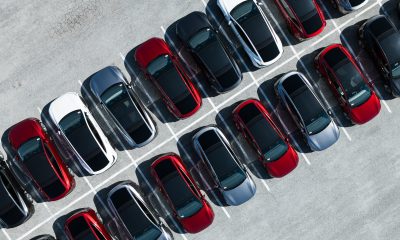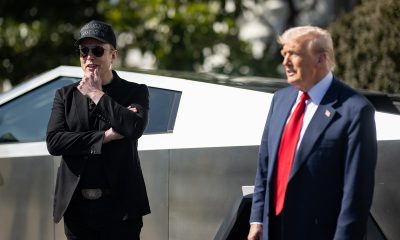News
Hyperloop One plans global distribution system to rival Amazon Prime
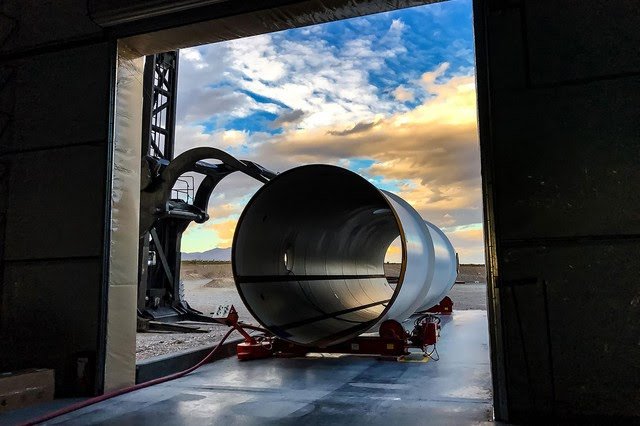
Speaking to the press at CES 2017, Hyperloop One executives laid out their vision for a new global distribution system that will revolutionize the way goods are delivered to markets worldwide. “Just think of Hyperloop as broadband for transportation,” Rob Lloyd, CEO for Hyperloop One, tells Inverse. “If you think of it as broadband for transportation you suddenly unlock a massive amount of change, and new applications. New thinking,” he added emphatically.
Semi-finalists announced
That “broadband of transportation” took a step toward reality on January 6 when Hyperloop One announced 35 semi-finalists in its Hyperloop One Global Challenge. Announced last May, the Challenge attracted entries from 2,600 teams of engineers and urban planners eager to convince the company that their’s was the perfect location for a Hyperloop demonstration project. One group proposed linking Dubai with Abu Dhabi. Another envisioned a Hyperloop link from Russia to China.
The 35 semi-finalists will present there ideas at three locations later this year — February 28 in New Delhi, April 6 in Washington, D.C., and April 27 in London. Hyperloop One will whittle the list of finalists down to about 6 finalists after those presentations are completed.
Government leaders, including transportation officials from the incoming Trump administration, will be invited to regional presentations. “Our instincts are that the work that we’re doing is going to be extremely well received when the people get into place,” Rob Lloyd says. “I think we’re going to be a very, very important part of the next three or four years in terms of the potential infrastructure that U.S. looks at.”
Feasibility studies will follow, but they are just a one step in the process. “We’re not in the business of doing studies, we’re in the business of looking for hyperloops that can be built,” Rob Lloyd says. “We want to have three routes in production in the next five years.”
Nick Earle, who oversees global field operations for Hyperloop One, tells Inverse, “This is not just about moving things and people quicker. This is [about] the business models that are disrupted — and enabled — by Hyperloop transportation.”
Autonomous cars included
There is another tie-in between Elon Musk — who originally conceived of the Hyperloop idea — and Hyperloop One’s vision. The company foresees autonomous cars — one of Musk’s highest priorities — as being able to travel inside the Hyperloop. “Autonomous cars will actually be able to go inside the Hyperloop. You actually can do door-to-door like never before,” says Nick Earle. That idea came out of a partnership between the company and Dubai’s Road and Transport Authority.
“It’s Amazon Prime on steroids,” Earle says. “You don’t have to use a fleet of airplanes, you don’t have to use warehouses outside of cities to store goods, because you have to truck them in to meet that one hour deadline that’s in the contract for Amazon Prime.”
“Kitty Hawk Moment” coming in April
A full scale test of the Hyperloop One prototype system is planned for April of this year. “It’s one thing for us to talk about building it, it’s something different for you to actually go build it,” Josh Giegel, President of Engineering for Hyperloop One, says. The demonstration will be fully open to the public.
“For us, taking this concept and actually building it, and testing it, and showing people — allowing them to see it, to touch it, to smell it if they want — is really, really important,” Giegel explains. “We’ve felt that way for a long time, that it’s one thing for us to talk about building it It’s something different for you to actually go build it.”
Tribute to Elon Musk
Hyperloop One acknowledges a debt to Elon Musk, the serial tech visionary who first envisioned the Hyperloop concept and made his thoughts public in a published white paper in 2013. “I think he’ll always have a big part of it.,” says Giegel. “We’ll forever be indebted to him for giving us kind of the idea, but we definitely changed the technology quite a bit from the original white paper.”
“It’s more than just a train, or a pod in a tube. We’re taking it to a level of connectivity and really being the high speed backbone of the future transportation network.”
News
Tesla opens massive solar Supercharger station in California
The Supercharger opened to customers ahead of Fourth of July weekend, while Tesla continues phase two of construction on the site.
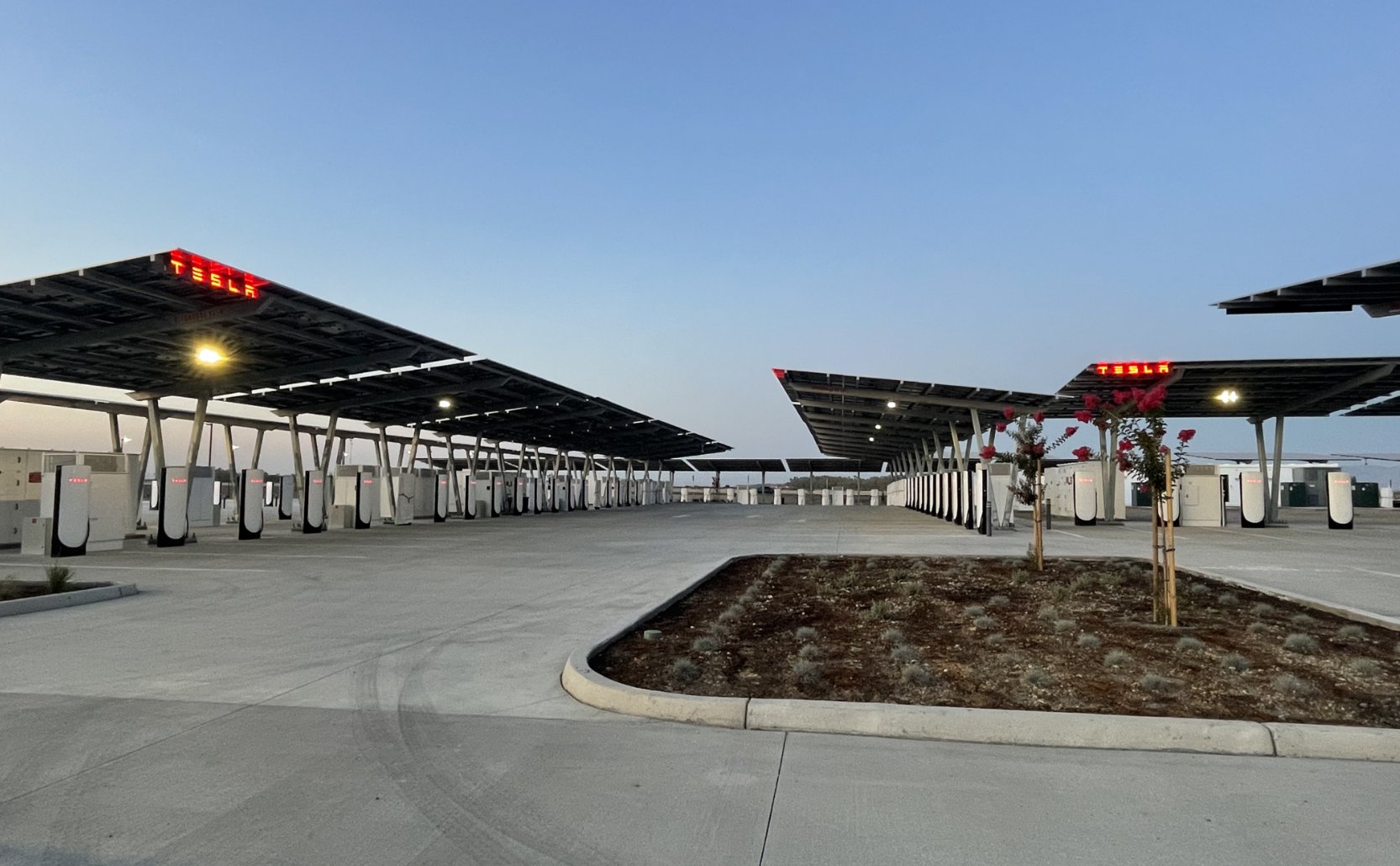
Tesla has officially launched the first several Supercharging posts at a massive station in California, notably including solar canopies and grid-scale batteries to offer completely renewable charging.
Last week, Tesla announced on X that it opened the first 84 Supercharger stalls of a planned 168-stall station in Lost Hills, California. Additionally, the massive Supercharger project features 11MW of solar canopies and 10 Megapack batteries for off-grid charging powered entirely by solar energy.
Tesla completed the first phase of the project just days ahead of the busy Fourth of July holiday weekend, adding that initial construction took just eight months. In addition to the remaining charging stalls, Tesla says it’s building a set of lounge areas, renderings of which can be seen below alongside current photos of the site.
Notably, the site also includes V4 charging posts for the company’s latest available charging speeds, and it’s located near the busy junction between I-5 and Highway 46 in Kern County.
“Thank you [Kern County] and [PG&E] for collaboration and approvals,” Tesla wrote in a follow-up post.
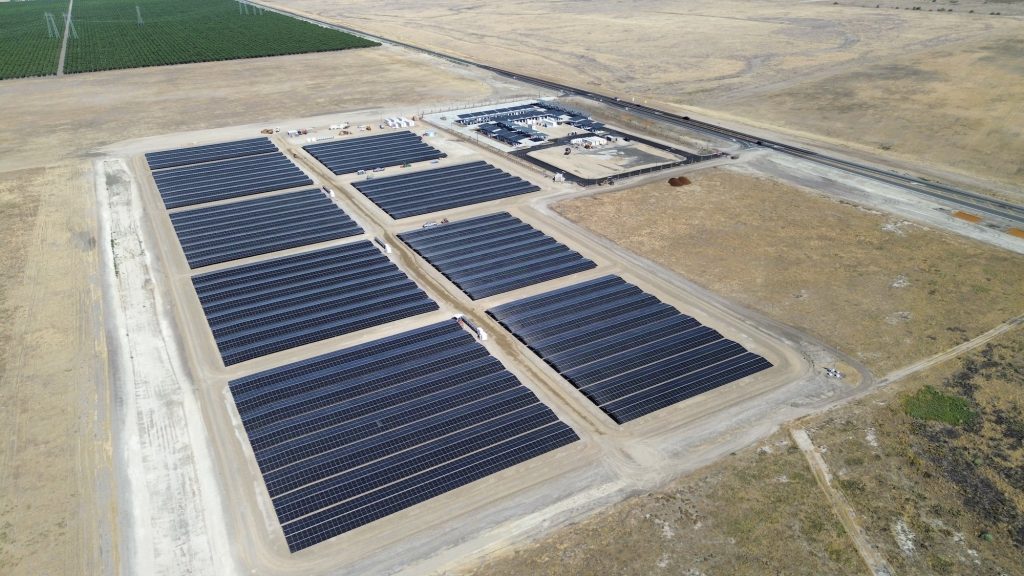
Credit: Tesla Charging | X

Credit: Tesla Charging | X

Credit: Tesla Charging | X
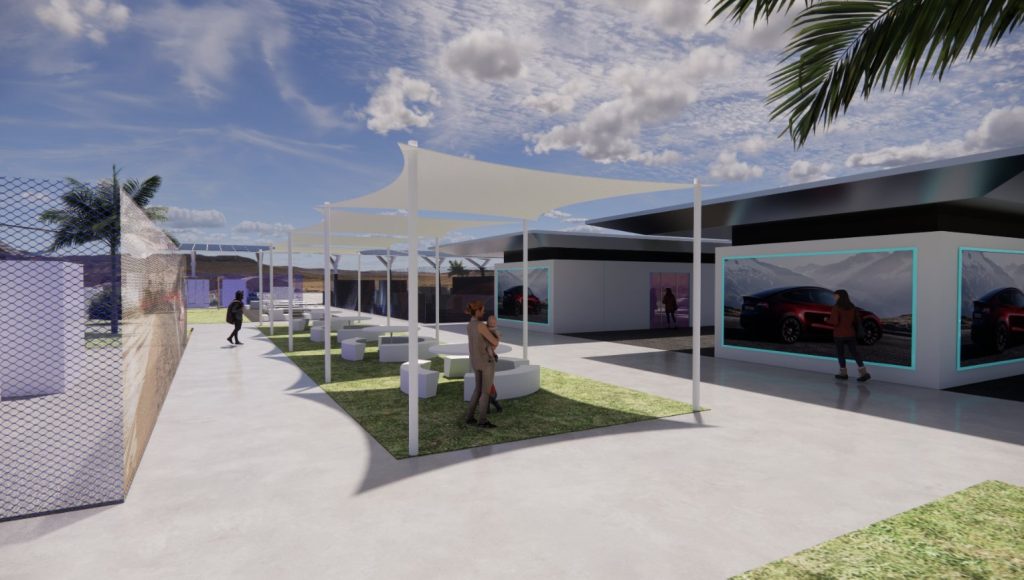
Credit: Tesla Charging | X
Tesla Supercharger Maps for North America, Europe, and Asia pic.twitter.com/0U5r0XRPyo
— TESLARATI (@Teslarati) July 2, 2025
READ MORE ON TESLA SUPERCHARGERS: Tesla launches ultra-fast V4 Superchargers in China for the first time
Testing at the LA Diner, plus Musk update on potential Tesla solar Gigafactory
The huge Tesla Supercharger station completed phase one of construction fairly quickly, especially given how long Tesla has been working on its unique Los Angeles diner, drive-in, and Supercharger location. Still, the company was seen performing some testing at the nearly-completed charging station earlier this month, and will reportedly be holding a job fair.
Elon Musk also responded on Monday morning to a post on X, suggesting that Tesla is “thinking about” building a U.S.-based solar Gigafactory in order to help support increased power needs with AI growth, and to bolster domestic solar production.
Tesla is building a new UFO-inspired Supercharger in the heart of Alien country
News
Tesla driver walks away from major accident with minor injuries
The driver sustained only minor injuries, and the exact cause of the crash remains under investigation.
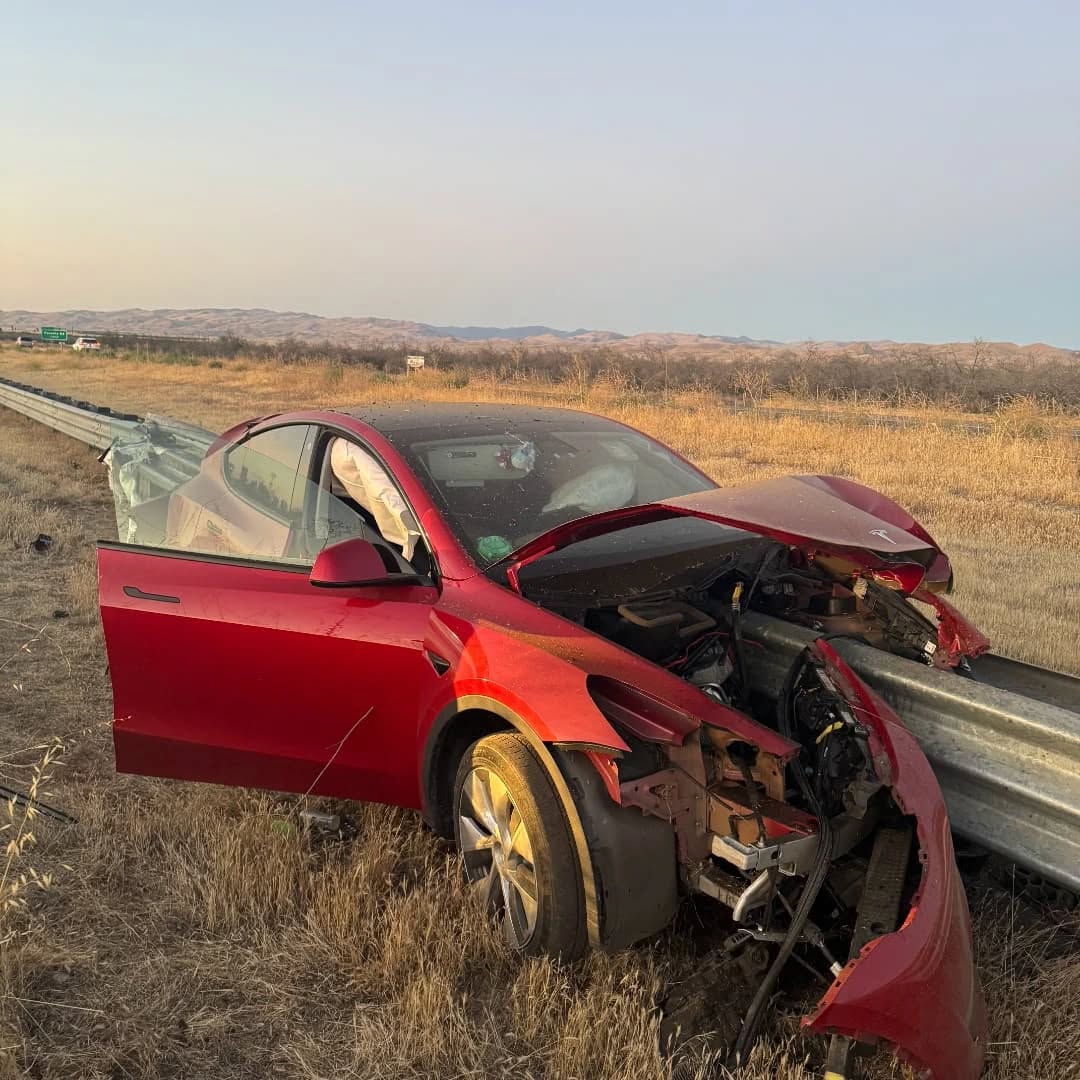
The driver of a Tesla Model Y survived and walked away from a harrowing accident on Monday in California, only sustaining minor injuries despite the vehicle being impaled by a guardrail.
On Monday morning around 4:34 a.m., the Los Banos division of the California Highway Patrol (CHP) responded to the accident on I-5 near Panoche Road, involving a 23-year-old in a Tesla Model Y. According to a post on social media, the driver veered off the road for unknown reasons in the northbound lane, before crashing directly into the guardrail and impaling the vehicle.
You can read the full message and photos from Los Banos CHP below, as were shared in a Facebook post on Monday afternoon.
This morning a Tesla model y was traveling in the #1 northbound lane of I-5 north of Panoche Rd. For unknown reasons driver allowed V-1 to veer off the roadway, travel through a dirt center divide, and crashed into the fixed metal guardrail. Lucky for the driver he only sustained minor injuries and was able to walk away. Driving a vehicle requires 100% attention to the road. Avoid distractions and focus on driving.
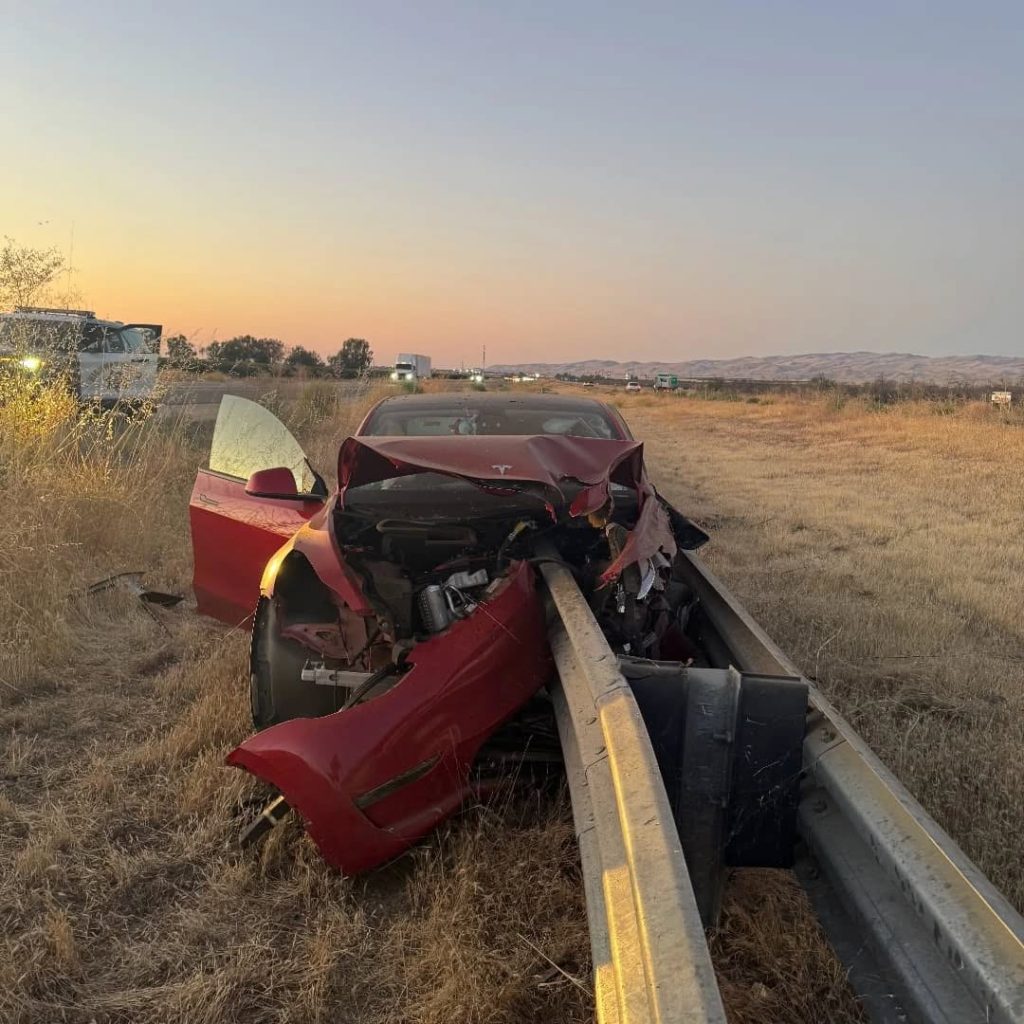
Credit: CHP Los Banos (via Facebook)
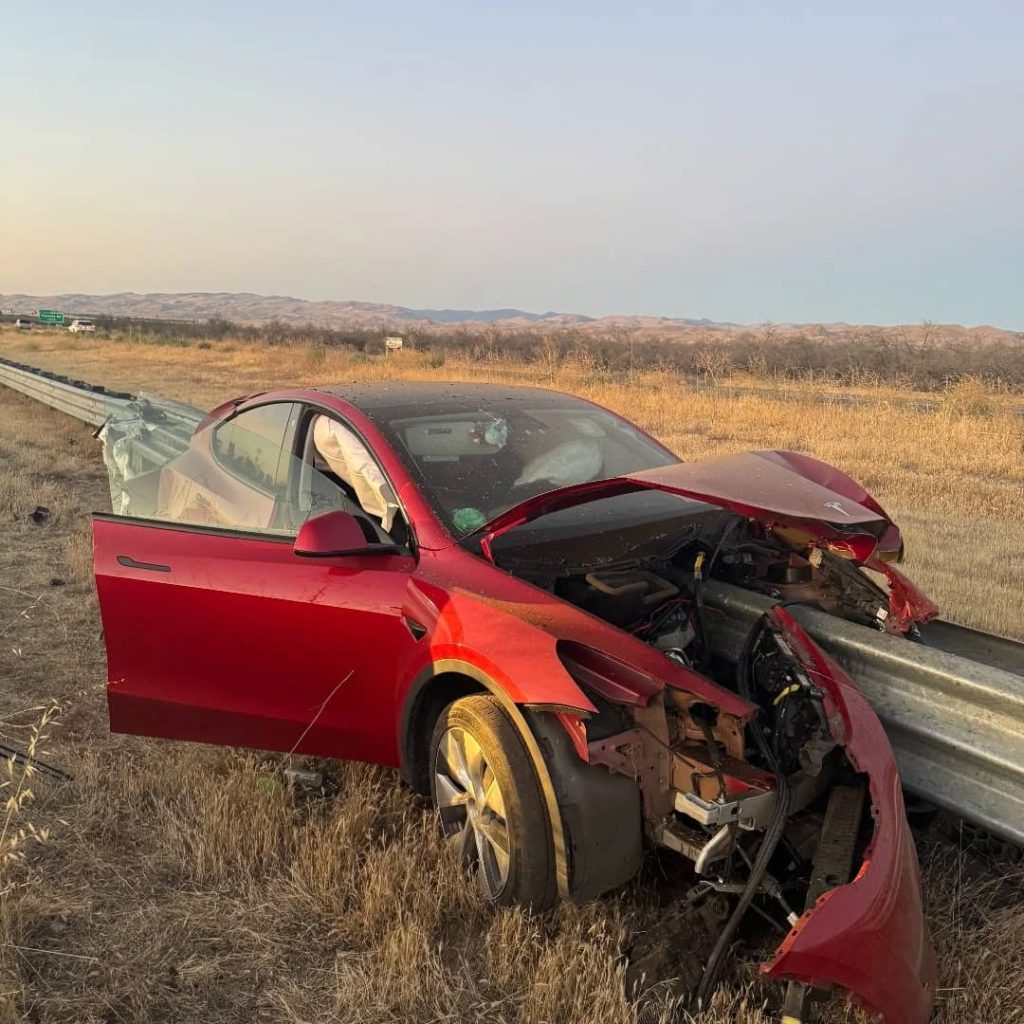
Credit: CHP Los Banos (via Facebook)
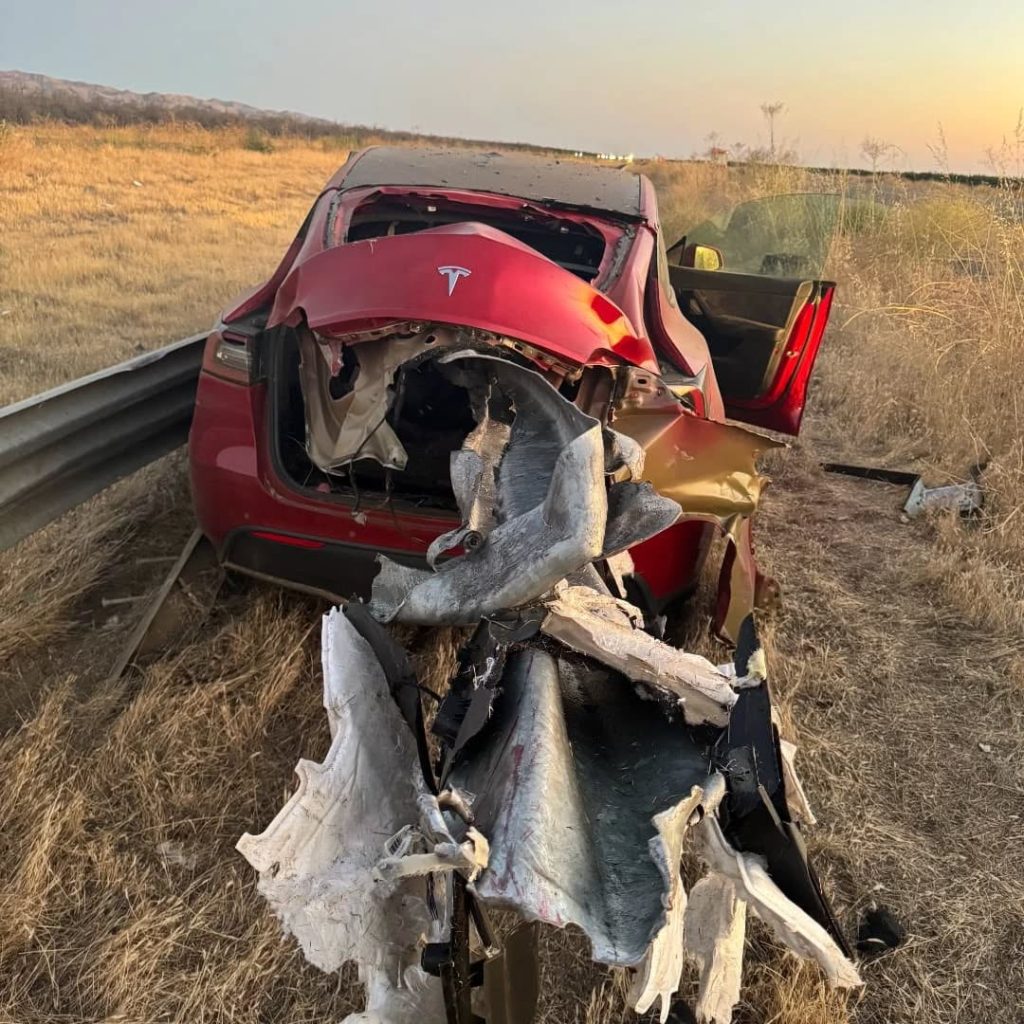
Credit: CHP Los Banos (via Facebook)
In a statement to SFGate, CHP officer Myles Anderson said that the driver only sustained minor injuries, while no arrests are made and drugs and alcohol are not suspected to have been involved. The report also notes that Tesla’s “cruise control and lane assistance features” were activated, according to Anderson. However, it’s not entirely clear if this is referring to Supervised Full Self-Driving (FSD), or to the cruise control and lane assist features baked into Autopilot.
At the time of writing, CHP has not yet responded to Teslarati’s request for clarification and additional details on the matter.
Tesla Crash Safety Ratings across its lineup: pic.twitter.com/ny30R7ceji
— TESLARATI (@Teslarati) July 1, 2025
READ MORE ON TESLA SAFETY: Tesla rolls out crucial new safety feature aimed at saving children
The news comes after Tesla has touted its vehicles as incredibly safe for many years. In December, for example, the company highlighted receiving top safety scores from regulators on four different continents throughout the world, including from the National Highway Traffic Safety Administration (NHTSA) and the Insurance Institute of Highway Safety (IIHS) in the U.S.
Tesla has also listed the goal of making its vehicles the safest on the road throughout the years, both in the overall design of its vehicles and in its Autopilot and Full Self-Driving (FSD) programs.
Tesla Model 3 ranks as the safest new car in Europe for 2025, per Euro NCAP tests
Investor's Corner
Cantor Fitzgerald maintains Tesla (TSLA) ‘Overweight’ rating amid Q2 2025 deliveries
Cantor Fitzgerald is holding firm on its bullish stance for the electric vehicle maker.
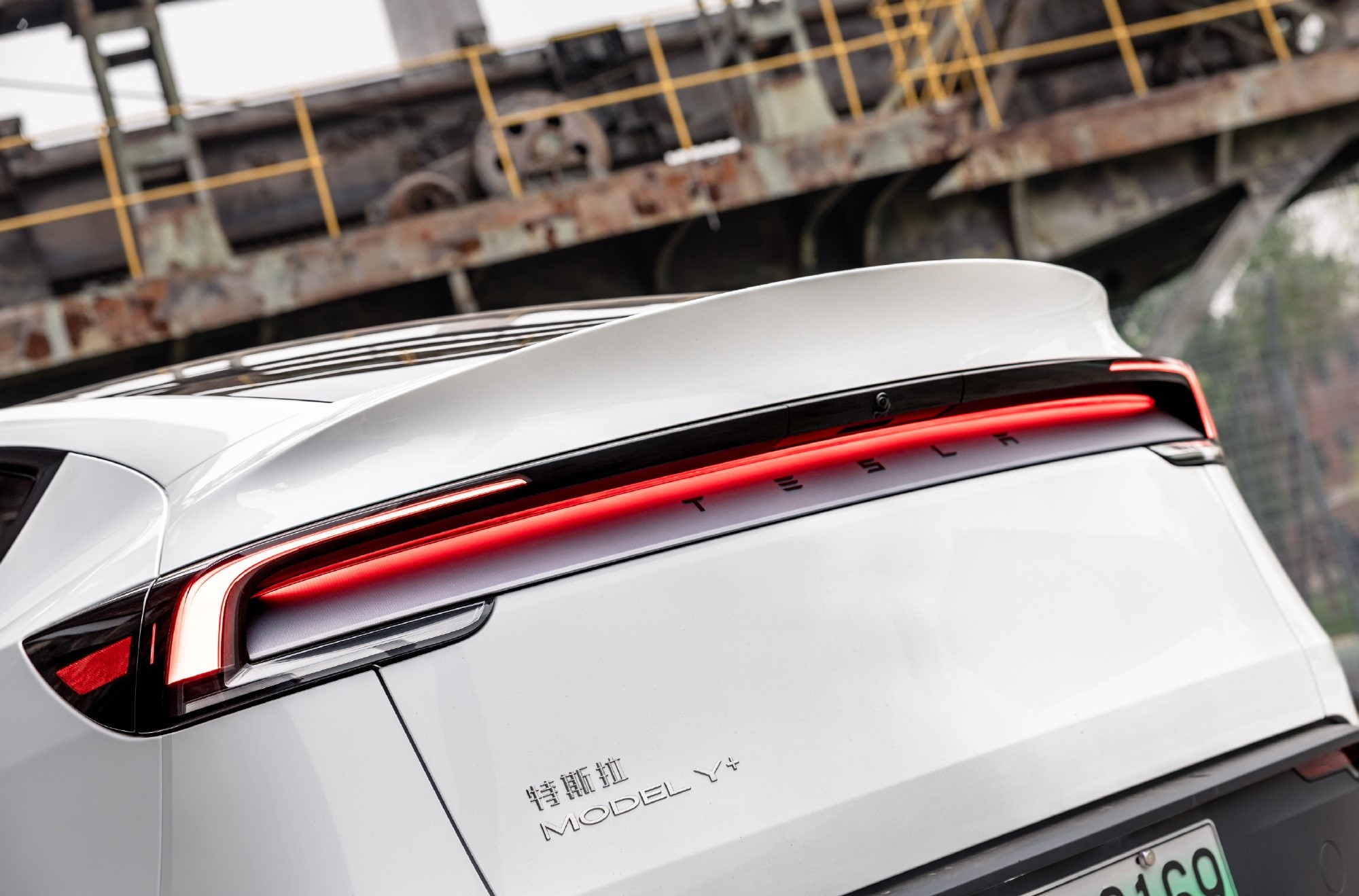
Cantor Fitzgerald is holding firm on its bullish stance for Tesla (NASDAQ: TSLA), reiterating its “Overweight” rating and $355 price target amidst the company’s release of its Q2 2025 vehicle delivery and production report.
Tesla delivered 384,122 vehicles in Q2 2025, falling below last year’s Q2 figure of 443,956 units. Despite softer demand in some countries in Europe and ongoing controversies surrounding CEO Elon Musk, the firm maintained its view that Tesla is a long-term growth story in the EV sector.
Tesla’s Q2 results
Among the 384,122 vehicles that Tesla delivered in the second quarter, 373,728 were Model 3 and Model Y. The remaining 10,394 units were attributed to the Model S, Model X, and Cybertruck. Production was largely flat year-over-year at 410,244 units.
In the energy division, Tesla deployed 9.6 GWh of energy storage in Q2, which was above last year’s 9.4 GWh. Overall, Tesla continues to hold a strong position with $95.7 billion in trailing twelve-month revenue and a 17.7% gross margin, as noted in a report from Investing.com.
Tesla’s stock is still volatile
Tesla’s market cap fell to $941 billion on Monday amid volatility that was likely caused in no small part by CEO Elon Musk’s political posts on X over the weekend. Musk has announced that he is forming the America Party to serve as a third option for voters in the United States, a decision that has earned the ire of U.S. President Donald Trump.
Despite Musk’s controversial nature, some analysts remain bullish on TSLA stock. Apart from Cantor Fitzgerald, Canaccord Genuity also reiterated its “Buy” rating on Tesla shares, with the firm highlighting the company’s positive Q2 vehicle deliveries, which exceeded its expectations by 24,000 units. Cannacord also noted that Tesla remains strong in several markets despite its year-over-year decline in deliveries.
-

 Elon Musk1 week ago
Elon Musk1 week agoTesla investors will be shocked by Jim Cramer’s latest assessment
-

 News2 weeks ago
News2 weeks agoTesla Robotaxi’s biggest challenge seems to be this one thing
-

 News2 weeks ago
News2 weeks agoWatch the first true Tesla Robotaxi intervention by safety monitor
-

 Elon Musk1 week ago
Elon Musk1 week agoA Tesla just delivered itself to a customer autonomously, Elon Musk confirms
-

 News2 weeks ago
News2 weeks agoTesla Robotaxi rollout proves that Elon Musk still delivers, even if it’s late
-

 Elon Musk2 weeks ago
Elon Musk2 weeks agoxAI welcomes Memphis pollution results, environmental groups push back
-
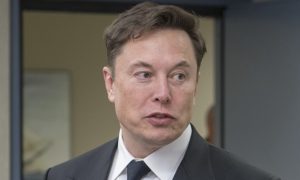
 Elon Musk2 weeks ago
Elon Musk2 weeks agoElon Musk commends Tesla team on successful Robotaxi launch
-
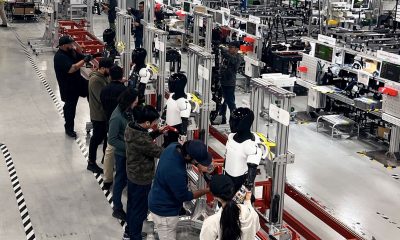
 Elon Musk2 weeks ago
Elon Musk2 weeks agoElon Musk confirms Tesla Optimus V3 already uses Grok voice AI






